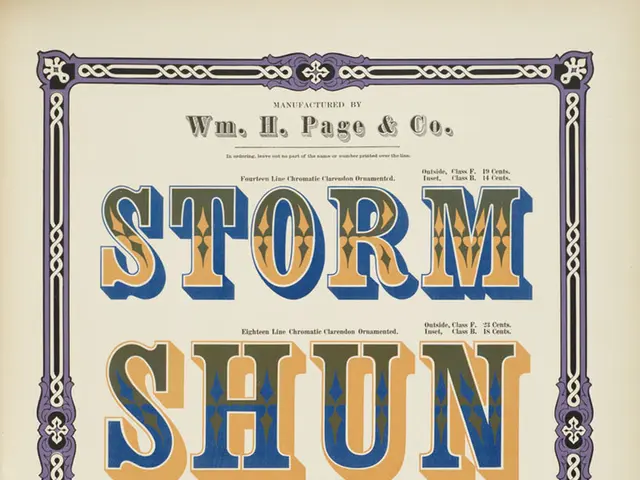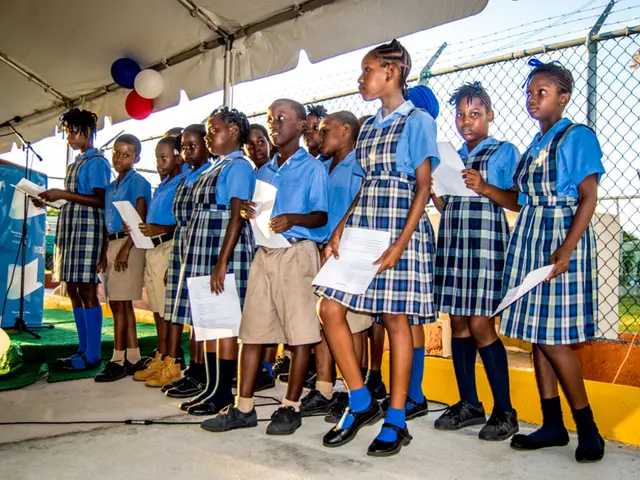Thirteen million Chinese individuals are set to attempt the Russian counterpart of the examination.
Going for Greater Heights: China's Gaokao vs Russia's USE
Image Source: Shutterstock
Mark your calendars! June 7, 2025, and China kicks off its annual national university entrance exam, the Gaokao. This year, a staggering 13.35 million students are participating.
The Gaokao demands attention, being hailed as one of the most competitive and intense academic exams on the planet. This high-stakes battle, often determining students' access to universities, influences careers, and shapes social mobility. Top scorers, irrespective of their social stature or camp, bag the coveted ticket to a promising future - a shot at the finest universities and a foundation for a prosperous career in a nation of 1.4 billion people.
Let's dig a little deeper:
Subject MatterGaokao is a rigorous examination spanning over three days, probing students' command in subjects such as mathematics, Chinese, and a foreign language, primarily English, with additional electives catering to students' desired areas of expertise.
Conversely, the Russian Unified State Exam (USE) is a set of exams spread over several weeks, measuring students' mastery of various subjects including mathematics, Russian language, and other disciplines.
Pressure and CompetitionGaokao is legendary for its overwhelming tension, as it decisively impacts the university a student can aspire to attend, significantly influencing their career paths. The competition is stupendous, with millions of students jostling for a limited number of spots in prestigious universities.
The Russian USE, while competitive, doesn't carry the same weight of anxiety. Students can retake the examinations if they don't pass, somewhat alleviating some of the pressure. Despite this, a favorable score in the USE is significant for university admissions.
Career ImplicationsThe Gaokao's triumphant results play a pivotal role in securing admissions to China's elite universities, cascading into better career opportunities. Gaokao scores frequently mark the distinction line between social mobility and employment prospects.
Russia's USE, while essential for high school graduation and university admissions, doesn't enjoy the same powerful influence on career trajectories as the Gaokao. Russian universities often employ additional entrance exams or interviews to further scrutinize applicants.
eSubstance:
- Gaokao and the Russian USE are both critical rites of passage for academic progression, but the Gaokao is characterized by greater intensity and a larger impact on career prospects. The Russian USE is less stressful and provides more flexibility.
- Gaokao necessitates an intensive three-day examination, covering a wide range of subjects, while the Russian USE consists of a series of shorter exams conducted over several days.
- The Gaokao's pressure lies in its enormous influence on university admissions and career opportunities, resulting from the stiff competition among millions of students. The Russian USE offers more leniency, allowing students to retake exams if needed, thereby reducing some pressure.
- The Gaokao is the make-or-break exam for university admissions in China, potentially ushering in a prosperous future, while the USE is mandatory for high school graduation, playing a role in university admissions in Russia.
- In essence, the Gaokao is fraught with tougher challenges and higher stakes compared to the Russian USE.
Participants in the Gaokao, not just in China but also those aspiring for personal growth and education-and-self-development, face an intense three-day examination that has significant implications for their future careers. On the other hand, despite being a critical examination in Russia, the Unified State Exam (USE) provides more flexibility, including the opportunity for students to retake examinations if they don't pass, which alleviates some pressure associated with learning and personal growth.








